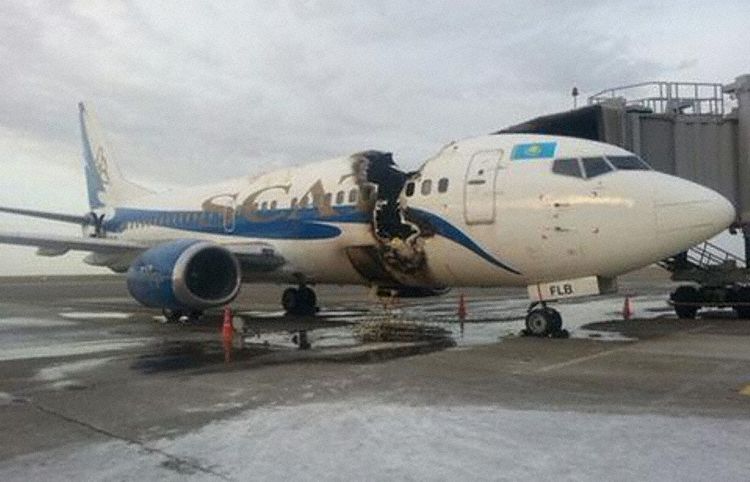Ground fire of a Boeing 737-322 in Aktau
Date & Time:
Jun 16, 2015 at 1900 LT
Registration:
LY-FLB
Survivors:
Yes
Schedule:
Aktau - Mineralnye Vody
MSN:
24667/1893
YOM:
1990
Flight number:
DV831
Crew on board:
0
Crew fatalities:
Pax on board:
0
Pax fatalities:
Other fatalities:
Total fatalities:
0
Circumstances:
After completing flight DV742 from Astana, the aircraft was parked at a gate, waiting for its passengers to complete the flight DV831 to Mineralnye Vody. The aircraft landed at 1818LT and was scheduled to depart around 1915LT when an explosion occurred in the forward baggage compartment (between STA 380 and STA 440). A fire spread into the cabin and partially destroyed the fuselage. Nobody was hurt in this incident but the aircraft was damaged beyond repair.
Probable cause:
The cause of the fire and the fire on board the aircraft, was the spontaneous destruction of the oxygen hose with compressed oxygen, used for filling the aircraft using a ground source with pressurized oxygen.
Contributing causes of fire and the fire were:
Instant spontaneous combustion of dynamically disturbed and oxygen-enriched air-flow in a fine dust environment in the front luggage compartment in the area of the aircraft oxygen bottle due to constant pressure of oxygen coming from an open oxygen cylinder.
Contributing causes of fire and the fire were:
Instant spontaneous combustion of dynamically disturbed and oxygen-enriched air-flow in a fine dust environment in the front luggage compartment in the area of the aircraft oxygen bottle due to constant pressure of oxygen coming from an open oxygen cylinder.











